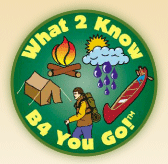On Saturday, September 26th, The Morton Arboretum in Lisle, Illinois hosted a workshop entitled “Survival Skills–Plants”. It was attended by 16 enthusiastic participants, predominantly families. Ron received valuable assistance from three very able Arboretum staff and volunteers–Caitlin, Linda, and Dave.
With Dave’s patient efforts the class was able to learn the process of making a bowl using nothing but a piece of wood, a hot coal from the fire, and a sharp stone. Unfortunately, Dave got a little carried away and the hole in the bowl “expanded” beyond its desired dimensions! But the class learned a very practical skill..
Caitlin worked tirelessly at breaking down the fibers of cattail leaves so that the students could use those as well as milkweed and dogbane fibers to make cordage, simple twine from plant material.
Linda worked at a number of tasks: pruning sticks to be used in the shelter-building exercise; assisting Caitlin with the cordage exercise; and serving as Ron’s “poster girl” by displaying at just the right moment the sign that asked the question “What Will Save My Feeble Suburban Tush?”*
Young and old alike took delight in collecting thumb-thick sticks to position along a 9-foot pole raised at one end to the height of 30”. The resulting “skeleton” would have served nicely as the base for a primitive debris hut to be covered with leaves. Unfortunately it was a few weeks too early for the trees to have given up their bounty.
Next, Ron demonstrated fire by friction using first a primitive bowdrill and then a flint & steel fire starter.
And the final treat of the day…all who wanted to were given the opportunity to try their hand at striking steel to flint to send a spark into a bundle of tinder made of plant material. There was a 90% success rate for these first-time fire starters.
Our thanks to the Arboretum, its staff, and its volunteers for hosting and helping with the event.
************************************************************************************************************************************************
*”What Will Save My Feeble Suburban Tush?” is a clue that we use to remind our students of the six items we believe are essential elements of a personal survival kit. They are light-weight, inexpensive, and easy to carry. All but one would fit into a fanny pack. To find out what they are you’ll have to attend one of our “What 2 Know B4 You Go!” workshops.







